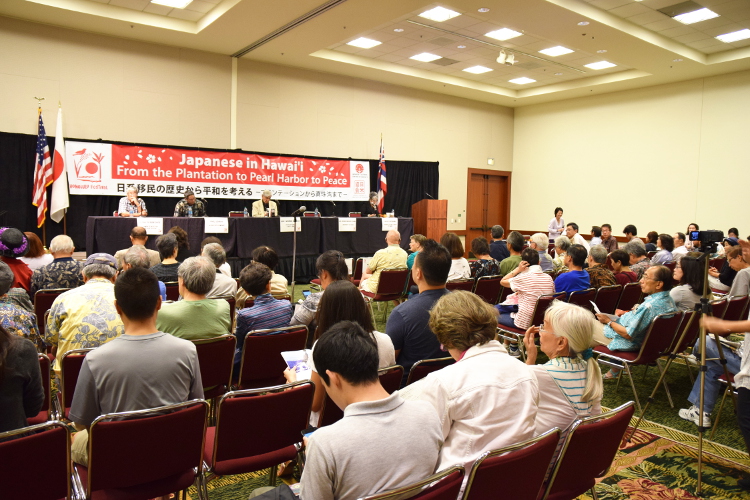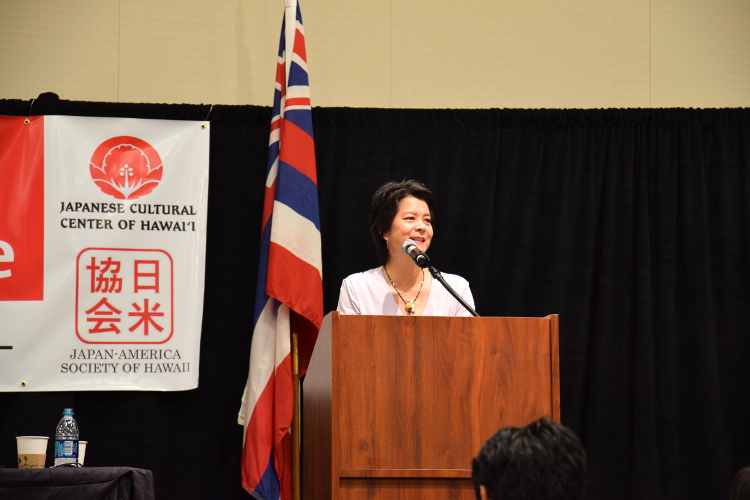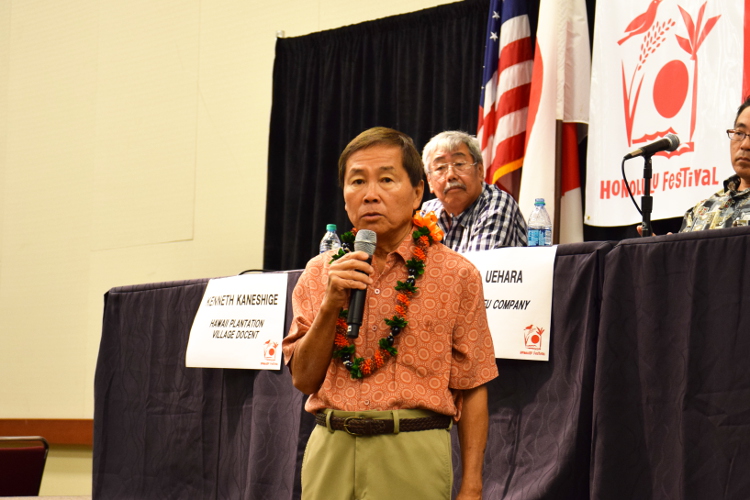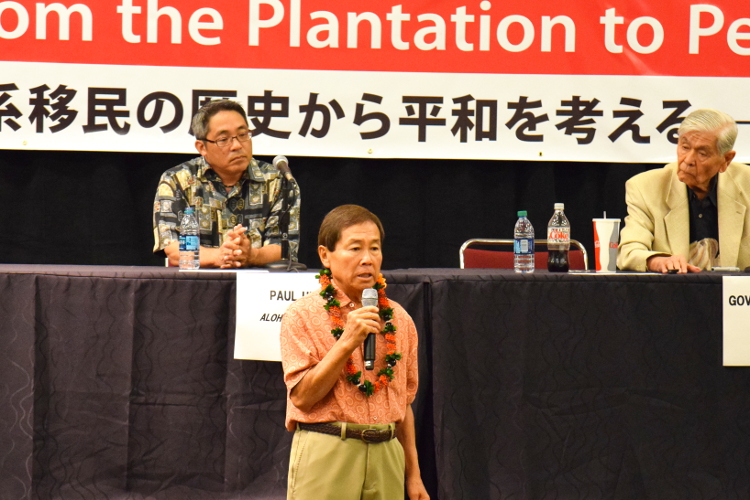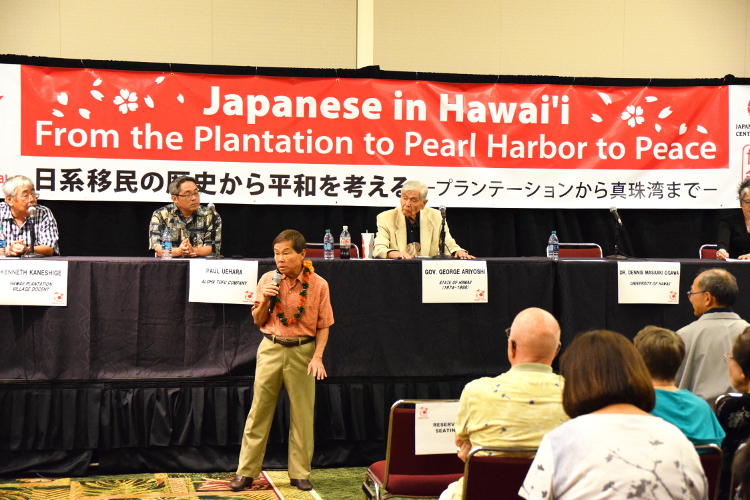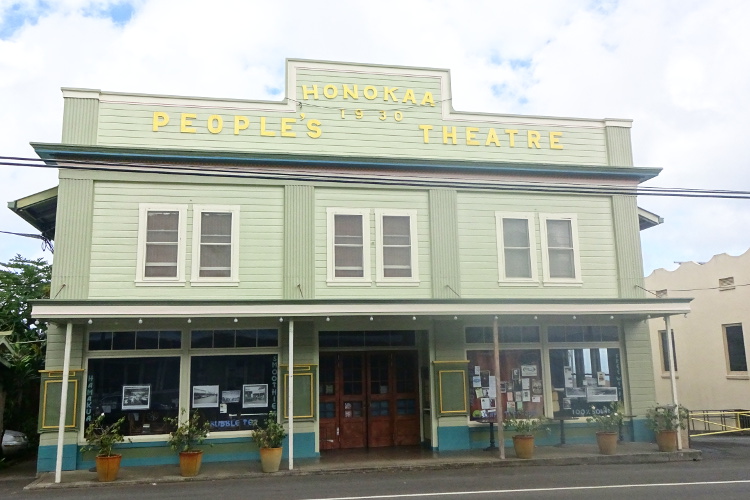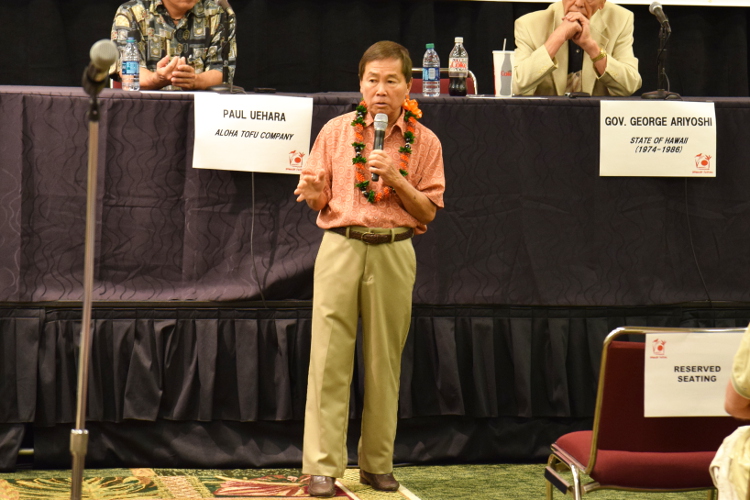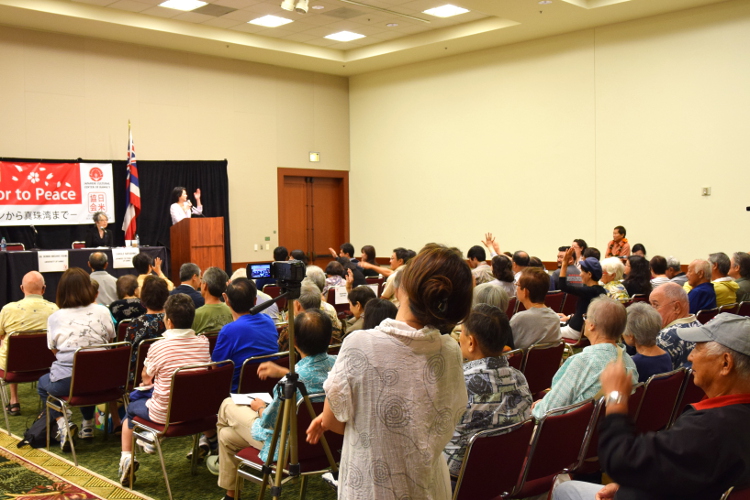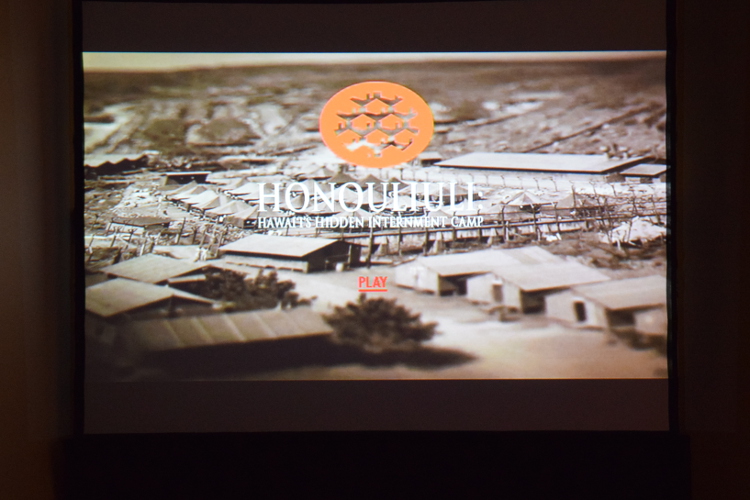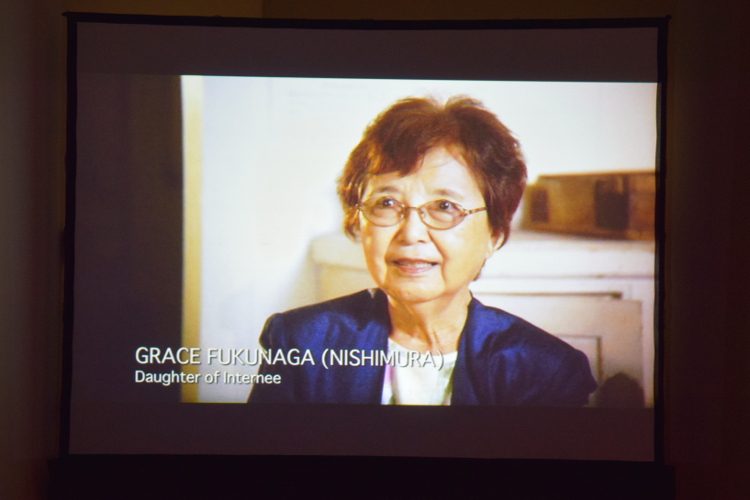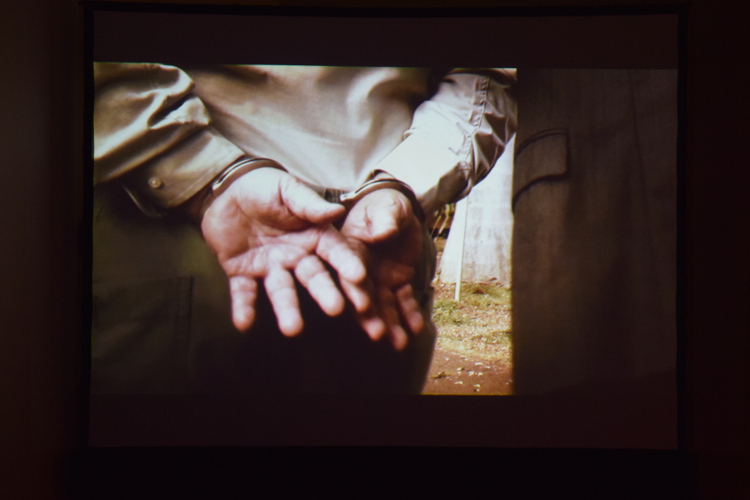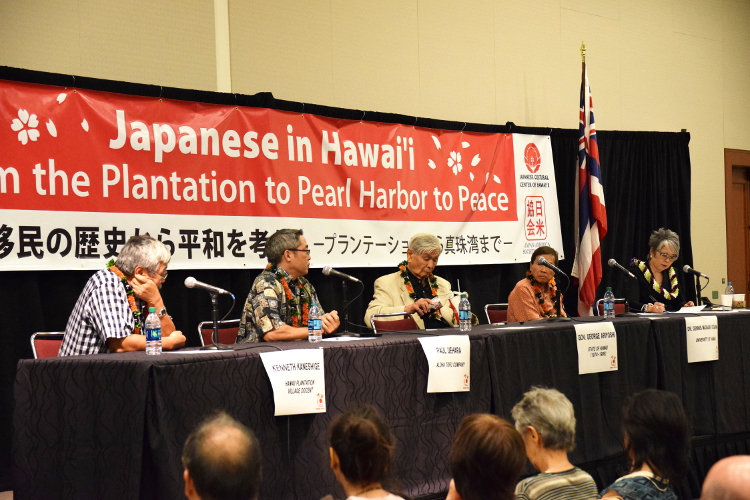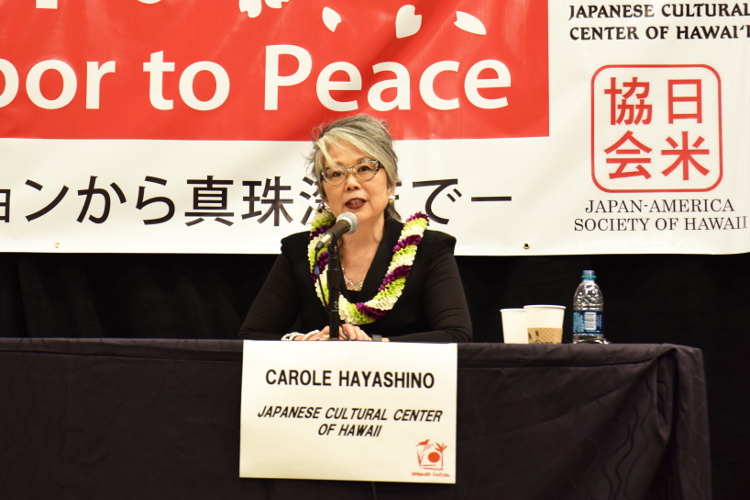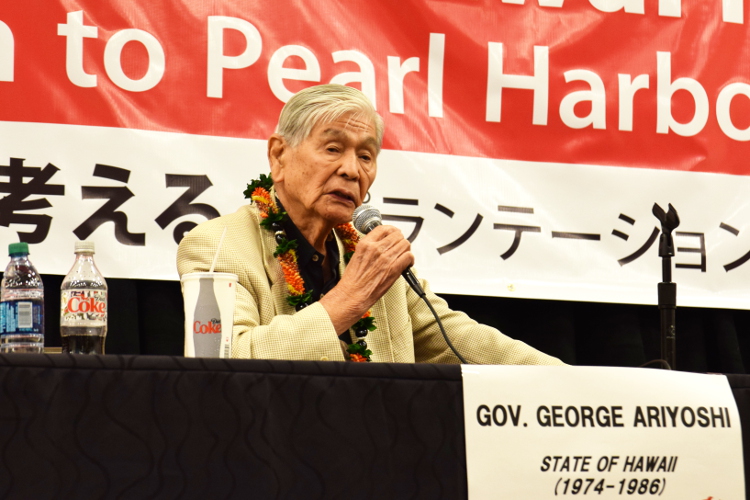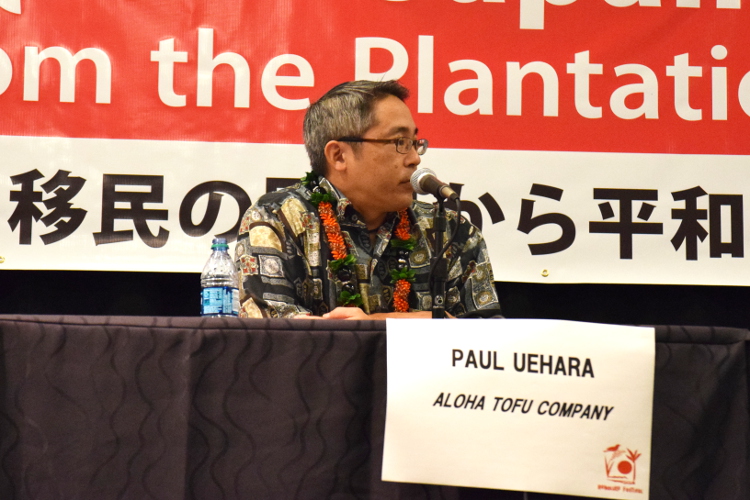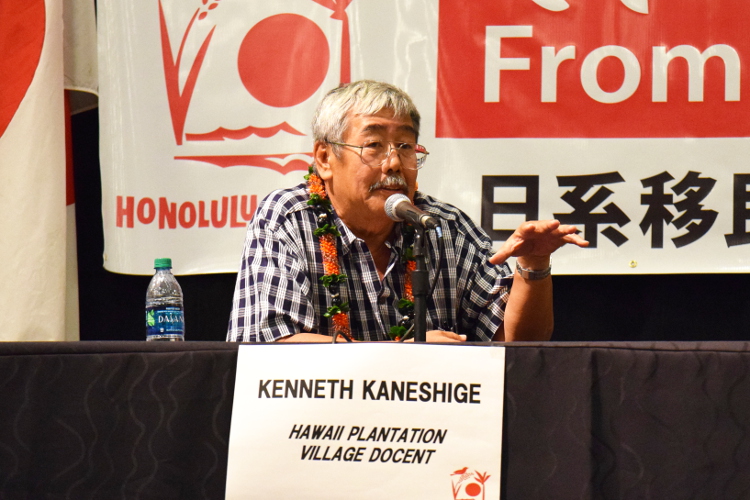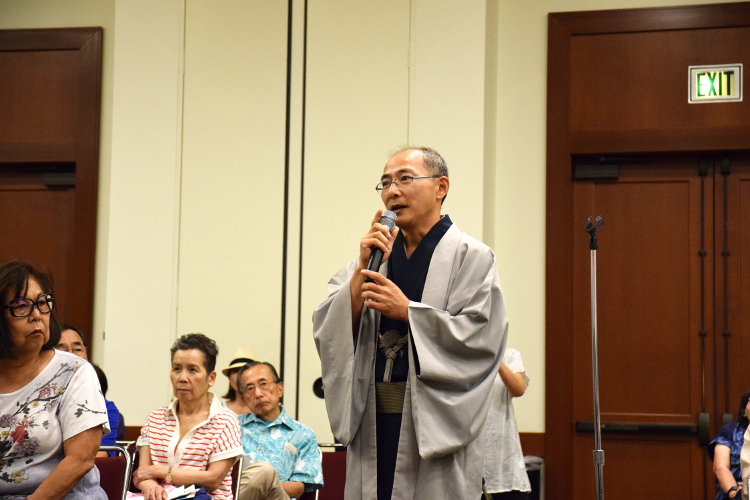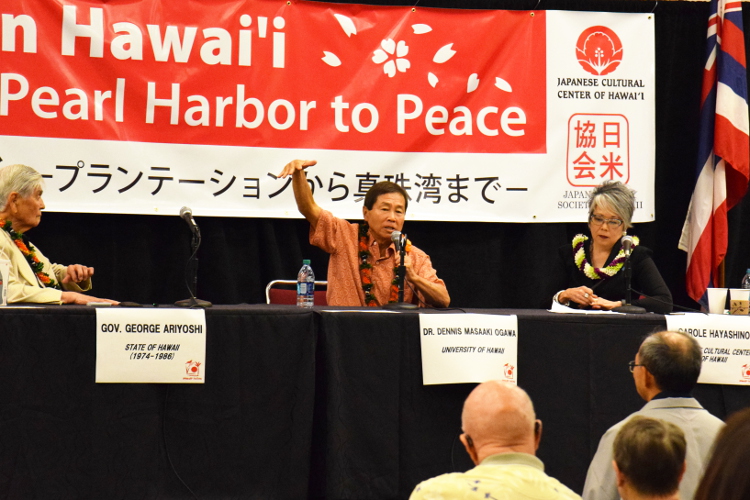The symposium was held on Saturday, March 12, 2016, from 2 p.m. to 4 p.m. at the Hawaii Convention Center.
This year’s topic was titled “Japanese in Hawaii: From the plantation to Pearl Harbor to peace” followed by the theme, “Japanese immigrant and peace”.
The seats were filled very quickly before it began.
Ms. Lenny Yajima, President of Japan-America Society of Hawaii who was the spokesperson last year for the Honolulu Festival was the MC. This symposium consisted of 2-sessions.
【SessionⅠ】featured keynote speech about “Overview of Japanese experience in Hawai‘i” by Dr. Dennis Ogawa, a professor of the University of Hawai‘i at Manoa.
【SessionⅡ】featured panel discussion on the topic of “sustainable peace”.
【SessionⅠ】The History of Japanese Immigration
In 1885, the contract laborers from Japan came to Hawaii for the first time. These immigrants faced many difficulties as they tried to make a living by working on the plantations. With the bombing of Pearl Harbor and the outbreak of World War II, many of the Japanese Americans were sent to internment camps.
The symposium discussed about the unique history of Japanese immigration and promoted peace and reconciliation.
Here is Dr. Dennis Masaaki Ogawa, a professor at University of Hawaii spoke about Katsu Goto, who was the first generation Japanese in Hawaii.
~~~~~~~~~~~~~~~~~~~~~~~~~~~~~~
Mr. Katsu Goto was one of the Japanese immigrants who came to Hawaii in 1885. He was one of the laborers who chose to work at the sugar cane plantations.
The history of early America started in the Northeast, such as Philadelphia and Boston. However, many thought that the population gradually spread out to the West due to Gold Rush, but this was a wrong assumption. It is true that many Americans rushed to the West to find gold which Hawaii was greatly affected. At the same time, the Civil War was taking place in America during this period as well.
Also, there was a shortage of sugar due to the battle in the South. When Americans arrived on the West Coast, they started searching for sugar cane in Hawaii. Thus, they required lands to build the plantations which the cheap laborers were preferred.
Around 1850, Americans showed interest in annexing Hawaii to the United States.
Furthermore, Hawaii’s economy was in a drastic decline. About 400,000 plantation laborers were imported from all over the world. Surprisingly, 150,000 laborers were from Japan. Also, 120,000 laborers were from Philippine, 50,000 were from China and 8,000 were from Korea.
Japanese were brought in with a 3-year contract. The working conditions were horrible and the wages were very low. Only a few of them managed to save money from working at the plantations, but others could barely make a living.
During this period, the population of Hawaii consisted of 7% Caucasian and 93% other races. Also, there was a big gap between the rich and the poor as well as the racial discrimination.
Caucasians were not only wealthy but also had authority in Hawaii. They had control over government, logistics, economy and religion. They were very intelligent and well-managed on the laborers. In addition, if the laborers were not handled properly, they would not work efficiently.
The plantations that were owned by Caucasians who utilized certain strategies. Mainly, they sorted the laborers by one’s nationality. Also, they segregated the residential arrangements. This prevented the laborers from forming a union and protest.
Also, the wages were different by nationality. Chinese were paid 50 cents more than Japanese. In addition, Japanese made 50 cents higher than Filipino. There were times when Japanese laborers were unsatisfied because they were been paid lower than the Chinese laborers. At the same time, they got paid more than the Filipino laborers. Caucasian exploited this sense of racial superiority among the foreign laborers. Mr. Katsu Goto was living under those circumstances where poverty, exploitation and racism were thriving.
He arrived in Hamakua on Hawaii Island by the first ship when he was 23 years old. Many of the Japanese laborers left Hawaii and returned to Japan after a 3-year contract, but he decided to stay and opened his own store.
Mr. Goto was a diligent worker which his store was in good business. His merchandise was sold in fair price to every customer regardless of their nationality. He trusted all the customers and allowed them to tab their payment at his store. One day, he made a decision to stay in Hawaii for a long period of time. Hence, he began to study English and became a fluent English speaker. All the other Japanese laborers could not speak English, so they depended on him.
Furthermore, the other stores were owned by the plantation owners which they hated Mr. Goto for being their competition, so they gave him death threats. However, Mr. Goto continued to support the other laborers and his store. His misfortune exemplifies one of the famous Japanese proverbs which quotes, “The nail that sticks out gets hammered in”.
October 29, 1989
4 years after Mr. Goto’s arrival to Hawaii, he was found dead in the morning which he was lynched and his body was hanging from the electric pole in the town of Honokaa. He was buried in a cemetery of Hamakua Jodo Mission. Mr. Goto had a niece named Fumiko. At this time, she was in Japan. Later, she heard about her uncle’s demise after she revisited Hawaii. Nevertheless, she was not upset but remained calm.
She visited the cemetery in Honoka, which the grave was rotten away and it was unrecognizable. Therefore, she decided to build a beautiful grave with the granite. Instead of holding her grudge and anger, she dedicated herself to praise her uncle and share his legacy with the world to build a peaceful society.
She stated, “Pass down the story about the past, praise the great achievement and contribute to the future.”
During her later years, she established the Japan Foundation. The scholarship from the foundation provided opportunity for young Japanese to visit Hawaii and learn about peace. This also creates a chance for them to expand their knowledge about the Japanese culture and to build goodwill between Hawaii and Japan. Fumiko gave a meaning to her uncle’s death by contributing for a better future.
~~~~~~~~~~~~~~~~~~~~~~~~~~~~~~
Dr. Dennis Masaaki Ogawa told his story.
“At present, both Mr. Katsu Goto and Fumiko had passed away. The monument of Mr. Goto was dedicated in Honokaa. If you have a chance to go to Hawaii Island, please visit his monument. It is so beautiful that you can’t miss it. 400 beautiful ties are laid on the roof with two wooden pillars. The monument is written in both English and Japanese. Also, there are two pillars; one is from Ohia and the other is Hinoki from Japan. The foundation is the rock from Waipio valley and the wall is made of granite from Hawaii Island. The monument itself represents strong ties between Hawaii and Japan. I think it is exactly the same as the theme of the Honolulu Festival, “Peace and Cultural Harmony”.
When the MC asked the audience, “please raise your hand if you think you have learned anything new from the story you just heard”, and many raised their hands. There was a big round of applause throughout the hall.
At the end of session I, the short documentary, The Untold Story: Internment of Japanese Americans in Hawaii was shown and the audience recognized the historic tragedy. Also, the Honouliuli Internment Camp was designated as the Honouliuli National Monument by a presidential proclamation on February 19, 2015 from President Barack Obama.
【SessionⅡ】Pondering Sustainable Peace Through a Story of Japanese Immigrants
Mr. Kenneth Kaneshige from Hawai‘i Plantation Village Docent, George Ariyoshi a former Governor of State of Hawai‘i, Mr. Paul Uehara, President of Aloha Tofu Company and Ms. Carole Hayashino, who is President of Japanese Cultural Center of Hawai’i were present during this session. Each of them expressed their opinion on the life of Mr. Katsu Goto.
The session II started with the topic of how achievements and sacrifices of first generations and second generations have contributed to our present life. Interestingly, the “sense of value” was a common phrase emphasized by each speaker.
Ms. Carol Hayashino stated, “okagesamade (thanks to you)”, “gaman (to endure)”, “ganbare (try your best)” and “shikatanai (can’t help it)” are the Japanese cultural words which they represent the values of Japanese people. They are always been the foundation of Japanese Americans who had survived through rough times.”
Mr. George Ariyoshi stated,
“Hawaii has a very important sense of value called “haji (disgrace)”. What it means is that you do not disgrace people who are close to you such as your family members or the people who are important to you. Also, it is important not to embarrass them.”
This was one of his values that he learned to embrace since his childhood in Hawaii. He continued,
“With that sense of value in mind, if you achieve what’s necessary, then the world will come together as one and we can create a better future whether if you are living in Japan, America or other countries.”
Mr. Paul Uehara explained that his values are “working together”, “working very hard”, and “building a mutual trust”. Mainly, these attitudes can be seen in the Japanese American companies and families. Also, the idiom “actions speak louder than words” was the message taught by his parents. He continued, “the values that I was taught have been penetrated not only to our family, but also to our Aloha Tofu Company. Now it is my mission to figure out how I can pass these values to the next generation.”
Mr. Kenneth Kaneshige discussed about the sense of value using an example from the first session on the harsh environment at the plantation.
“The workers who were in charge of managing each race of the laborers emphasized about embracing your own original skill rather than being friendly with everyone. Also, they encouraged not to lose the sense of values and pass on to the next generation. As a result, values of the Japanese were built very strong. For instance, there were 150 Japanese Buddha temples and 180 Japanese schools in Hawaii during the attack on Pearl Harbor. The Japanese culture and values were highly cherished. What I would like to emphasize is that Hawaii has become a multi-cultural state that embraces cultural diversity in which we peacefully co-exist. Hawaii is where everyone accepts and enjoys.”
Lastly, Mr. Yasushi Misawa who is Japanese Consul General was one of the audience asked these 2 questions.
1. How much do young people in Hawaii as well as the U.S. mainland know about the legacy of the Japanese immigrants?
2. How can the visitors from Japan learn about this legacy? I would be pleased to know if there’s any place to visit in Hawaii.
Dr. Ogawa from the University of Hawaii responded “I don’t think they know what I know (Laugh). So, I can’t retire anytime soon but rather I need to continue teaching.”
Furthermore, he seemed aware that every nationality is interested in the history of their ancestors. Also, he once again realized the responsibilities of the Japanese Cultural Center of Hawaii as well as the Hawaii Plantation Village to teach the history of the Japanese immigrants for the tourists and young locals.
So what can we do? This symposium gave us the opportunity to explore what it is. The historical bond is connected by the sense of values. It is important to learn about the past by sharing tradition for the peaceful future which the communication becomes crucial.
We hope that our cultural exchange will contribute to world peace and we will be taking a new approach next year.

 日本語
日本語